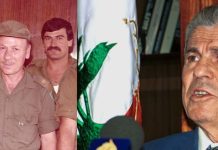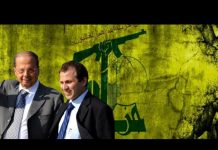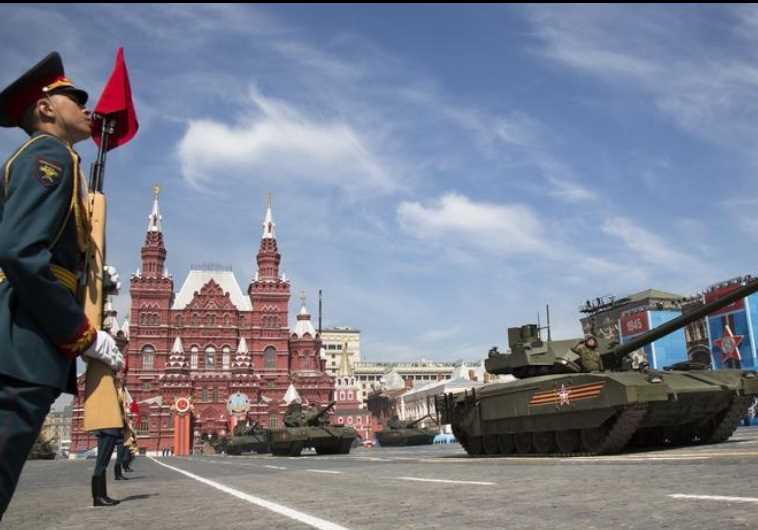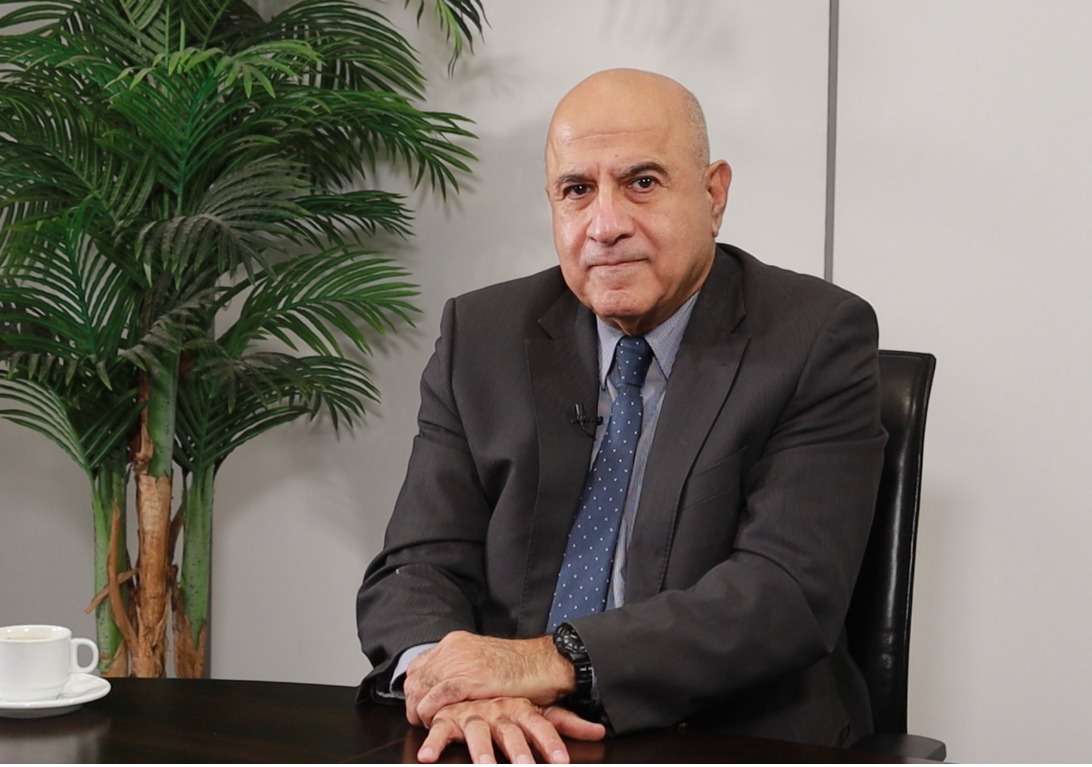Opposites protract
Michael Young/Now Lebanon/September 18/15
Alas, Russia has a plan in Syria, but America doesn’t
One day someone will write a book on how the United States and Russia behaved in Syria. They will argue that whereas the Russians had a clear idea of what they wanted to achieve, the Americans had none whatsoever, and spent years backtracking or adjusting to a reality that surpassed them. This was made evident again this week when General Lloyd Austin, the commander of US Central Command, admitted to Congress that only “four or five” Syrians who had been trainees under a $500 million program to arm and train “moderate” rebels were fighting in Syria. This was a shock, despite Defense Secretary Ashton Carter’s disclosure in July that the United States had trained only 60 rebels to combat ISIS in Syria.
The Obama administration now accepts that its program has failed and is looking to change direction. The Americans aim to bring in up to 500 Syrians as “enablers and liaisons” to coordinate between US forces stationed outside Syria and groups inside that have been deemed effective against ISIS.
In other words, the administration is still avoiding what is at the heart of the Syrian conflict: Bashar Assad. Even as they tell the Russians that Assad’s presence is fueling the war, the Americans refuse to take action that might force him out. Washington has refused to arm and train rebels to fight the Assad regime, fearing that its sudden collapse might benefit ISIS.
US officials told media outlets last July that an agreement had been reached with Turkey over the creation of an ISIS-free zone in northern Syria, which could double as a safe zone for displaced Syrians. Yet Austin contradicted this when he told Senator John McCain that he did not recommend such a zone “at this time.”The Americans have warned the Russians against a military build-up in Syria, arguing it would only prolong the war. The Russians are keeping a mass murderer in place, but for Washington to tell the Russians this when American inaction for nearly five years has allowed the conflict to drag on and become a humanitarian nightmare shows remarkable nerve. Russia is morally condemnable in Syria, yet President Vladimir Putin quickly grasped one thing in 2011: It’s better to know what one wants and pursue it with conviction than to try to be morally upright and allow one’s indecision to make a situation worse. Neither Syria’s opposition nor their Arab backers has made Russia pay for its pro-Assad line, while the Obama administration is viewed by both with ill-concealed contempt.
What is the Russian plan in Syria? There is more to it than merely arming and bolstering Assad. The Russians tend to think in strategic terms, and see that keeping Assad in power must be fortified with a political arrangement. Apparently Putin believes the time is ripe for such an arrangement, with Europe facing a major refugee crisis, the United States still having no Syria policy, and the Syrians exhausted by years of war.
If one had to guess, the Russians see an opening to use terrorism fears in the West as an opportunity to push through a political plan that keeps Assad in power and that would isolate his foes, above all Saudi Arabia and Turkey. The plan in question is likely to be a modified version of the one proposed by the United Nations envoy to Syria, Staffan de Mistura.
De Mistura has proposed that four working groups be set up, including representatives of the regime and the opposition, to discuss safety and protection, political and constitutional issues, military and security issues, including fighting terrorism, and public institutions and development.
Revealingly, De Mistura has said that his plan is based on two pillars: combating terrorism and protecting Syrian state institutions. This must be music to Russian ears. The plan would outline a transitional phase, during which a temporary government would be formed with executive powers. The proposal has been adopted by the UN and welcomed by Egypt, but is rejected by the Syrian opposition.
Indeed, much of the plan is vague and there is no mechanism for Assad to step down. However, whereas De Mistura may favor turning Assad into a figurehead to attract opposition approval, the Russians have excluded this. Moscow feels it can impose Assad as a leader, and a recent British proposal that he remain in power for a limited transitional phase, like signs of a Spanish shift on Assad, shows they may be justified.
At the same time the Russians are said to be deploying forces to the city of Hama. If confirmed, this would put them on the front line in fighting Jabhat al-Nusra and to a lesser extent ISIS in Aleppo Governorate. Having proven their bona fides in combating terrorism, and having secured Assad in Latakia Governorate, the Russians would be in a better position to push everyone toward a solution in Syria that ultimately keeps Assad in place.
That is easier said than done, but the Europeans are so overwhelmed by Syrian refugees that they may be willing to consider it. The Americans have criticized the Russians, but are focused on improving ties with Iran and have no enthusiasm for seriously opposing Russian actions. And the Arab states and Turkey offer nothing but more war and radicalization, so that their position may be eroded internationally, forcing them to reconsider their actions in Syria if a consensus emerges.
The Russians’ intentions are cynical, but their single-mindedness may pay off. What they really see is that on the other side of the aisle they have an Obama administration that has proven utterly incompetent in Syria. The highway is open and the Russians will ride it until they get what they want.
***Michael Young is opinion editor of The Daily Star newspaper. He tweets @BeirutCalling
U.S. starts implementing Iran nuclear deal
The Associated Press | Washington/Friday, 18 September 2015/The Obama administration began carrying out the Iran nuclear deal on Thursday as time expired on Republican efforts to derail it, appointing a senior diplomat to ensure that Tehran moves further away from bomb-making capability and outlining a months-long process before Western nations will start easing economic sanctions. Senators failed to reach the threshold for a measure to keep all sanctions in place on Iran until it recognizes Israel and releases all imprisoned Americans, and then on a resolution expressing disapproval of the nuclear agreement.
Two previous votes in recent days against the Iran deal also failed, and a 60-day window in the Republican-controlled Congress to prevent President Barack Obama from implementing the seven-nation pact was set to close Thursday night. Shortly after the votes, the State Department named Stephen Mull as “lead coordinator for Iran nuclear implementation.” Mull, who has served as ambassador to Poland and in other top diplomatic posts, takes on the “crucial” responsibility of shepherding an agreement “which will make the United States, our friends and allies in the Middle East, and the entire world safer,” Secretary of State John Kerry said.
The accord clinched by the U.S., Britain, China, France, Germany, Russia and Iran on July 14 will provide Iran hundreds of billions of dollars in relief from international sanctions in exchange for a decade of constraints on the country’s nuclear program. While the Republican-led Congress’ objections posed the last serious threat to the package, the sides will need months to put the deal into place. Washington expects Tehran to begin on Oct. 18 making major changes to its main site for enriching uranium at Nantanz, its underground nuclear facility at Fordo and its heavy water reactor at Arak. Uranium can be enriched as part of fuel production or for nuclear weapons development. At Nantanz, Iran will have to uninstall thousands of centrifuges and place them in storage controlled by the U.N’s International Atomic Energy Agency. It must also remove electrical infrastructure and pipework. The entire process could take months, senior U.S. officials said.
They weren’t authorized to speak publicly on the process and demanded anonymity. No sanctions relief will occur until all the steps are completed, they insisted, but they said Obama would start issuing waivers on Oct. 18 so that the U.S. can fulfill its end of the bargain once the IAEA verifies Iran’s full compliance. The European Union will undertake a similar process for actions it plans to take, such as ending a ban on imports of Iranian oil. Obama also will instruct U.S. agencies such as the State Department and Treasury Department to lay the groundwork for relieving sanctions on Iran. Iranian compliance also will end U.N. penalties, though some will remain. These include an arms embargo that lasts up to 5 years, a ballistic missile technology ban for up to 8 years, and a ban on transferring any unauthorized nuclear goods, which stays in place for a decade.
Experts urge release of IAEA inspections details of Iran site
By Reuters | United Nations/Paris/Friday, 18 September 2015/Several nuclear security experts are urging the United Nations nuclear watchdog and world powers to release details of how a sensitive Iranian military site will be inspected as part of a landmark nuclear deal reached in July.The experts, with long experience in international weapons inspections, said the failure to disclose the details was damaging the credibility of the International Atomic Energy Agency (IAEA), a view that is rejected by the agency itself, the United States government and another prominent non-proliferation expert.
The confidential plan for the Parchin site has led to differing reports on how it will be carried out, with some critics of the U.S. administration saying Iran had been given too much leeway to conduct its own inspections, including taking samples. The inspections are needed to resolve questions about whether Iran did research in the past at Parchin related to building a nuclear weapon.David Albright, head of the Institute for Science and International Security in Washington, expressed unease about the lack of public details on the arrangement. “(Details) should be released because it’s undermining the IAEA’s credibility,” Albright said.
“Whatever the outcome of the sampling, the secrecy makes it harder to determine whether it’s a credible sampling approach.”The IAEA has said it has a legal obligation to keep details of the arrangement confidential, but insists it is technically sound and will ensure the samples are not compromised. Iranian officials have also said that international experts would not be allowed in.Four diplomats familiar with the deal told Reuters that U.N. inspectors would be present at Parchin to oversee the inspections. In the unusual arrangement struck in July, the samples would be taken by Iranian technicians while IAEA experts present at Parchin observe and oversee the process, Western diplomats told Reuters. The diplomats, who have knowledge of the deal, said that while the IAEA inspectors will not be next to the Iranian technicians when they take samples, they will be at Parchin overseeing the process. Cameras will record the process. Iran cannot receive sanctions relief promised under the nuclear deal until the IAEA is satisfied it has answered outstanding questions about the so-called “possible military dimensions” of past Iranian nuclear research. Tehran says its nuclear program is peaceful and that it did not conduct atomic weapons research.





















